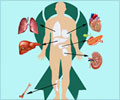A recent study evaluated the benefits and costs of screening programs for the prevention of sudden cardiac death (SCD) in children.

Although there is no hard and fast line separating worthwhile and expensive public health interventions, programs can be compared to get an idea of their value. For example, interventions that cost $90,000 to $200,000 per life year saved are considered expensive, compared to other interventions, which often save life years at $50,000 to $100,000, or even less. The results of this study suggest that finite public health resources might be better spent elsewhere.
The "human cost" of screening suggests its true price may be even higher. Because conditions causing SCD are so rare, even an occasional "false positive" means that for every previously undiagnosed child accurately identified, many children who would never have died from SCD may be labeled as being at-risk.
The research team stressed that the cardiac conditions causing SCD in children are incredibly rare. Many are cardiac conditions are genetic and there may be a family history of early (< 50 years of age) or unexplained SCD in a family member. Dr. Leslie advises that "the most concerning family history in a child is when a parent or sibling is diagnosed with a likely familial cardiac disease; those children should certainly be evaluated." Since some disorders that cause SCD may not be identifiable on an ECG until late adolescence or early adulthood, an ECG in a parent with a positive family history may provide more information than an ECG in a child. Another indication to consult with a doctor is if a child reports any experiences of fainting or shortness of breath with strong emotions or during exertion (not related to a medical condition like asthma).
Source-Eurekalert














